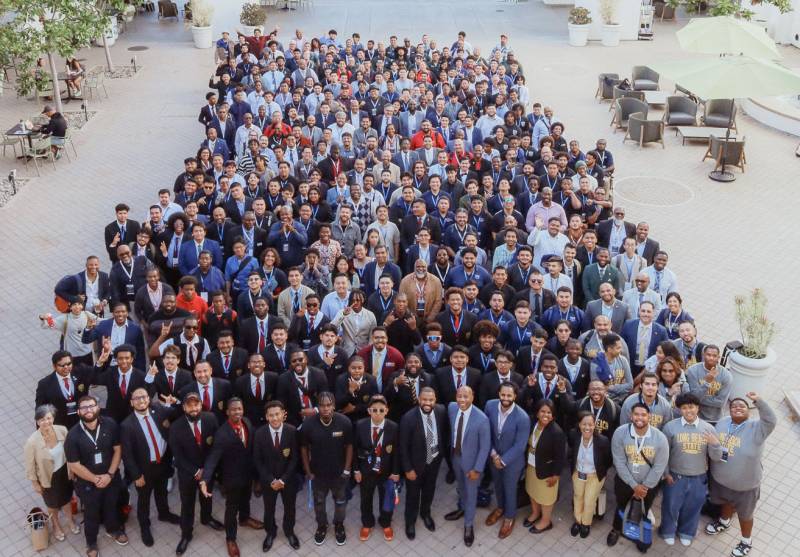Last year, Cal State campuses received some sobering details about the growing gaps in graduation rates between students of color and their white counterparts. Instead of decreasing, the graduation equity gaps between Black, Latino and Native or Indigenous students have been increasing.
However, some campuses are targeting new funding and strategies to specifically target students of color that will help increase graduation, persistence and retention.
CSU’s Young Males of Color Consortium, which is housed at Cal State Dominguez Hills, received $3.2 million from a group of organizations, including Ballmer Group, College Futures Foundation, ECMC Foundation and Ichigo Foundation, to create new programs that support men of color on Cal State campuses. Sixteen CSU campuses and their neighboring community colleges will deploy those programs to improve transfer, retention and graduation rates for up to 800 students. The partnered universities and colleges will start working with up to 40 young men each to pilot the new strategies.
The consortium, which started in 2017, has the goal of working across campuses to share information and data and find solutions to help CSU’s Black and brown men.
The main challenge the consortium realized it needed to tackle was “institutional complacency” because many campuses failed to have the right data on students of color or limited their investment in improving their academic performance, said William Franklin, vice president of student affairs for the Dominguez Hills campus.
Last year, during CSU’s Graduation Initiative 2025 event, new data revealed that the graduation gap between Black, Latino and Native American students and their peers increased by 1 point to a 13% difference. The 2023 six-year graduation rate for Black students, for example, is at 47% but 62% for all students.
The rates on the Dominguez Hills campus, for example, are lower for Black and Latino men. The six-year rate for Black men is 36.4% and 38.9% for Latino men on the campus. Data for Native American and Native Hawaiian or Pacific Islander students was unavailable.
